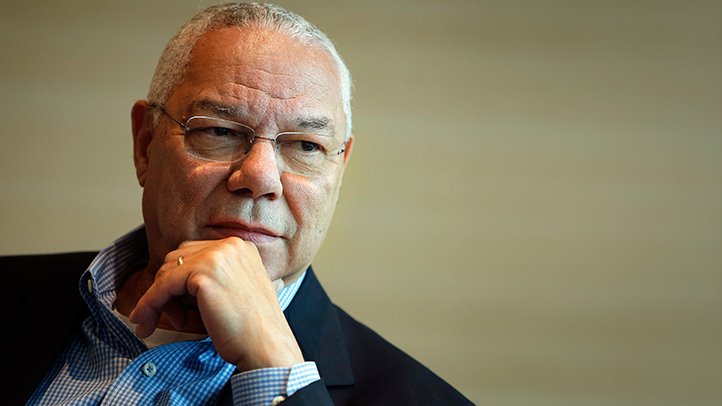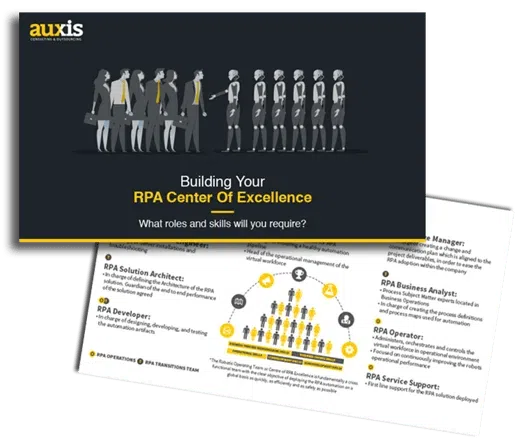In a recent post, I shared 5 Lessons Learned on How to Get Started with Robotics Process Automation (RPA). These lessons ranged from “don’t drink the vendor Kool-Aid” to “embrace your workforce” to “start small.”
But who are the intended learners of these valuable lessons? They are the members of your future RPA center of excellence (CoE).
This is the hybrid team of business process experts, enterprise architects and innovation leaders who will not only deliver your first process automation project but also teach other cross-functional RPA teams to duplicate their success.
Your RPA center of excellence team lineup will require a unique range of specialties and “home departments” to imagine, build and maintain your company’s process robots.
CoE Leadership Profiles
In his first autobiography, General Colin Powell observed that the team of officers leading any successful military unit include three leadership personalities: a visionary, an enforcer and a “chaplain.”

“With vision only, you get no follow-through. With enforcers only, the vision is realized but leaves a lot of wreckage. Good ‘chaplains’ pick up the pieces and put everything together again.”
Similarly, a successful RPA leadership team combines to promote the vision, performance and stakeholder consensus required for a successful automation program.
RPA Vision
The CoE SPONSOR is the senior executive who inspires and initiates the program, underwriting the resources and supporting (or protecting) the adoption of automation throughout the business. The executive sponsor may be in charge of IT, finance, operations or production.
Regardless of the sponsor’s “day job,” he or she must be passionate about RPA’s potential for improving costs, accuracy, and compliance―on a modest timeline and budget compared with typical solution deployments.
RPA Performance
The CHAMPION (Head of CoE Operations) can be a technology or operations leader, but either way, he or she must be a natural leader in innovation. The RPA champion is responsible for the health of the automation pipeline as well as building popular support among the user groups. The champion also must set and manage stakeholders’ expectations as to what the robots can accomplish.
RPA Consensus
Think of your CoE CHANGE MANAGER as a programmer of human interaction for automation projects, creating a change plan and employee communications roadmap for each deployment.
CoE All-Star Team
Solution Delivery

BUSINESS ANALYSTS represent business operations as the process experts. These analysts identify and quantify the opportunities to automate revenue-generating tasks as well as compliance or cost-saving processes.
These analysts are the CoE team members most likely to spot the “swivel-chair integration” (employees needlessly re-keying data between systems) where RPA adds so much value. They may also be tasked with documenting legacy knowledge and experience associated with the transactions being automated.
SOLUTION ARCHITECTS operate at the heart of the RPA program, defining the solution architecture and protecting its end-to-end performance. Give an architect structured, digitalized data processed by predefined rules and he or she can design a robot to manage it.
DEVELOPERS design, develop and test the automation artifacts.
Watch this demo to see a typical example of RPA developers’ work save time and money.
Day-To-Day Operations
The RPA SUPERVISOR is a more or less permanent resident of Roboticsland, orchestrating and fine-tuning the operational performance of the virtual/robotic workforce.
The INFRASTRUCTURE ENGINEER probably carries the biggest keychain on the team. Responsibilities include server integration and troubleshooting every piece of hardware except the swivel chairs.
SERVICE SUPPORT SPECIALISTS are the front-line support for both the RPA solution deployed and its business stakeholders.
Combined strength of a hybrid CoE
The RPA center of excellence model combines technology leaders and process leaders for maximum value. While business process managers are great at what they do, they may not be as up-to-date on new technological innovations as their IT-focused teammates. On the other hand, IT specialists benefit from the process managers’ deep knowledge of the business transactions.
If an issue with a robot occurs, both sides of the team will need to be able to quickly identify and address the issue without impacting back office performance and deadlines.

That’s why I recommend working with an RPA advisor or Managed Service Provider. An experienced RPA expert can support the launch of your CoE, helping its leaders identify where RPA makes sense and advising the RPA Supervisor on the ongoing monitoring and administrative support requirements for continuing performance.
